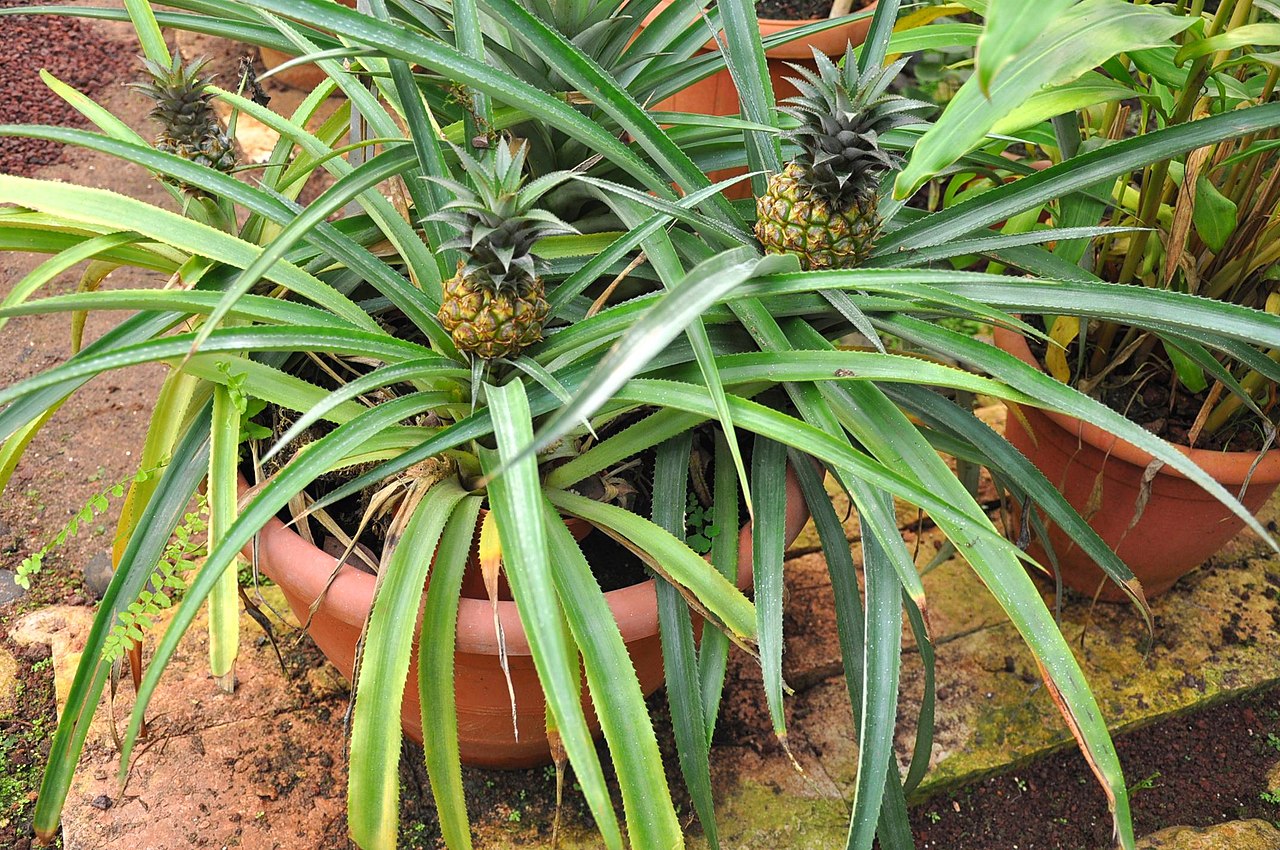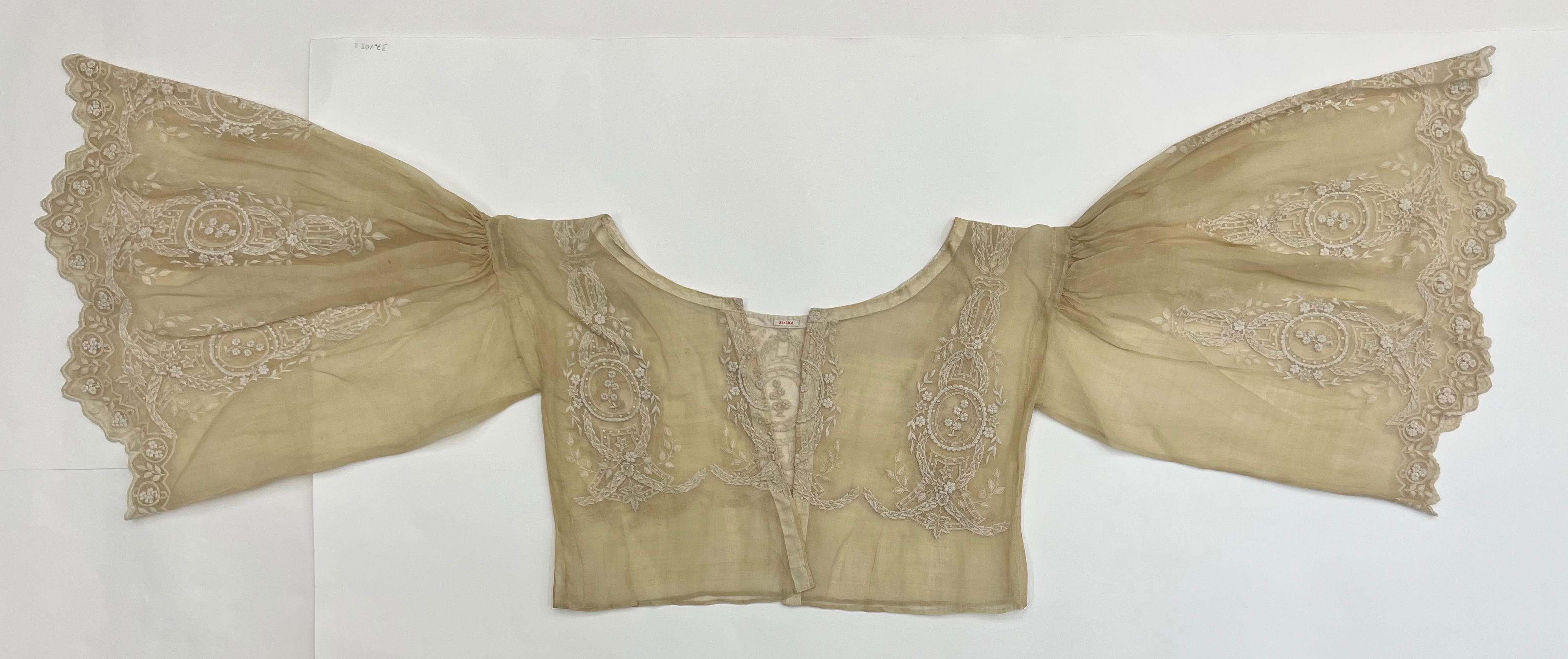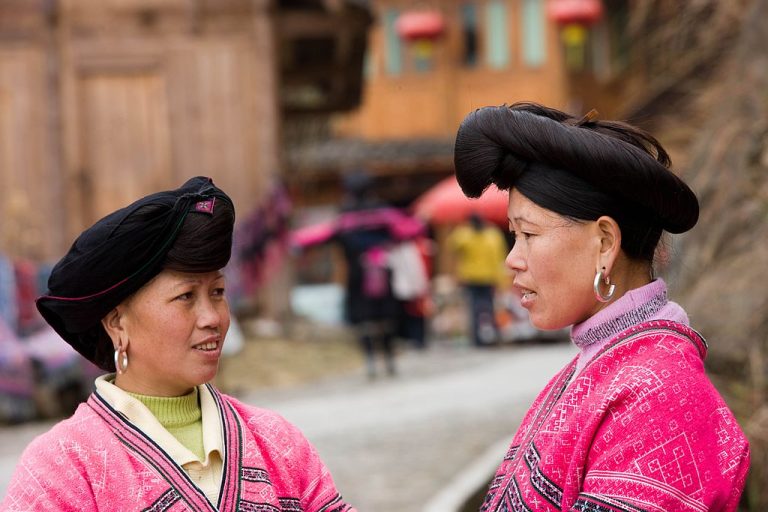In our exploration of natural fibers we again return to South America to visit another dual-purpose crop. Believe it or not, the same plant that produces sweet and exotic pineapples, offers an equally-exotic fiber valued for both its beauty and durability.
This short-lived perennial is cultivated in many tropical areas across the globe, spanning not only its native South American countries; but also areas of China, India, and the US island state of Hawaii — which produces about 10 percent of the world’s pineapple’s crops.
Production of the soft and lustrous fabric known as piña began in the 16th century, after it was introduced to the Philippines.
The pineapple plant
The pineapple plant (ananas comosus) is a member of the bromeliad family — a group of flowering monocots found mainly in the American subtropics. These low-growing plants send up spiky, fibrous leaves from the ground, and produce a single fruit in the center to complete their life cycle.
Although it would take nearly three years to grow a pineapple from seed at home, commercial growers using asexual propagation can produce fruit in about half that time.

Success
You are now signed up for our newsletter
Success
Check your email to complete sign up
When the plant is mature, a single flower stalk grows from the center, producing a cluster of flowers that resembles a small fruit, with a crown of small leaves on top.
Over the course of a few months, the flower stalk grows above the large, basal leaves, the pollinated blossoms are shed, and an aggregate fruit begins to form. It takes another few months for the fruit to develop and ripen for harvest.
Columbus’ arrival on the island of Guadeloupe ushered in the expansion of pineapple cultivation across the world. Today, Indonesia produces the most pineapples, with Costa Rica and the Philippines contending for a close second.
The history of piña natural fibers

The use of plant fibers for textiles dates back to prehistoric times. When pineapples were introduced to the Philippines, local traditions for extracting fiber from foliage were applied to the long, rigid pineapple leaves.
Early piña fabric clothed the less-privileged Philippine population in the 1700s; but with the application of fine needlework introduced by the Spanish, piña textiles became popular for the upper class and across Europe by the 1800s. Some articles even made fine gifts for royalty.
By the 20th century, however, piña production slowed with the introduction of cheaper, synthetic fibers. Since production units were considered obsolete, and the Philippines were not a free country yet, there were no efforts to revive the piña industry.
After the country was freed from colonial rule, piña production has seen an upsurge, and is now used to make everything from sturdy totes to the finest formalwear.
READ MORE:
- The Fascinating Process Behind the Beauty of Natural Fibers (Part IV): Linen
- The Fascinating Process Behind the Beauty of Natural Fibers (Part V): Hemp
- The Fascinating Process Behind the Beauty of Natural Fibers (Part VI): Abaca
- The Fascinating Process Behind the Beauty of Natural Fibers (Part VI): Fique
(Image: Violaine Martin via Wikimedia Commons CC BY-SA 4.0)
Processing pineapple fiber
Pineapple fiber can be extracted from the leaves via either mechanical or manual labor.
Manual Process
With the manual process, the leaves are tied and submerged into a retting tank to loosen gummy substances and dissolve the bulk of the plant tissue. This process can take about a week. Afterwards, the leaves are tied and dried, the fibers are scrapped, and then the bundles are washed and dried again in open air.
Though this strenuous process loses a lot of fiber, farmers are able to obtain around two to three percent of dry fiber, which amounts to around 25 kilograms of fiber per ton of pineapple leaves. After drying, wax is applied for detangling purposes, and then they are knotted. The knotted fibers are tied into a long collective strand, and sent for warping and weaving.
Mechanical Process
With mechanized processing, the leaves are placed in a raspador drum, which beats the leaves with rotating blades to clean the fiber. Afterwards, the fiber is combed to separate the fine threads from the spongy ones.
The sorted fibers are then knotted by hand and spun with a charkha wheel, to create a continuous thread to be used for fabric.
Applications for pineapple fiber
With its soft, silky sheen, piña fiber yields a sturdy, yet light material that is ideal for tropical attire. When wet, the fabric becomes even stronger.
Aside from its typical use for traditional formalwear and high-end fashion, piña is used to make durable accessories — like shoes and handbags; home furnishings — like upholstery and table cloths; and high-quality paper — like that used in currency.
This fine-quality fiber is not only an affordable, vegan alternative to silk; it should be considered a suitable, sustainable alternative to synthetic fibers.













